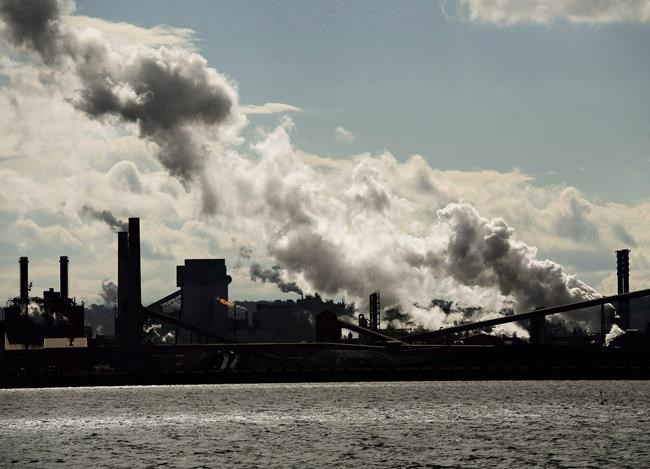A University of Toronto professor says residents of Hamilton, Ont., could be inhaling the chemical equivalent of one or two cigarettes per week -- at minimum -- due to elevated levels of a cancer-causing compound in the air.
Matthew Adams, an air contaminants researcher working on behalf of the City of Hamilton and the non-profit Environment Hamilton, said air quality monitors installed on street poles across the city and funded by Health Canada found concentrations of benzo(a)pyrene, or BaP, higher or much higher than provincial criteria.
Adams said the BaP concentrations are highest in Hamilton's industrial region, but also elevated across the municipality's urban areas.
In urban neighbourhoods farther away from the industrial area, residents may be exposed to the equivalent of half a cigarette or one cigarette every few days, Adams said in an interview.
"But at the highest concentrations, exposure to the air you're breathing would expose you to about the same amount of benzo(a)pyrene that's in a cigarette," he said.
The city has known about its BaP problem for some time, but Adams said the carcinogen's ubiquity across the entire city is surprising.
Long-term exposure to the chemical, created by burning tobacco, wood or coal, and by operating gas-powered vehicles, can increase cancer risk.
Although an individual's risk of developing cancer is not dramatically increased from Hamilton's air pollution, Adams said the city's chronically exposed population would eventually see a correlation with increased cancer rates.
Determining how many cancer cases the city's BaP levels may be responsible for is the goal of Environment Hamilton's study.
Hamilton's steelmakers have been known BaP emitters for years, said Adams. Reduced steel production and improved standards for pollution capture since the 1980s have been offset, however, by increased industrial traffic throughout the city, he added.
Adams said site-specific emission exemptions granted by the provincial government to Hamilton's steel industry have encouraged air pollution and tied the hands of the local government.
"We should be abiding by regulatory concentrations, and eliminating site-specific standards that (steel factories) have been given in Hamilton," he said.
Ultimately, Adams said Hamilton residents will have to engage with the provincial government and their MPPs to see emissions standards change in the steel town.
"The big takeaway for me is that we have regulation, but then we have site-specific standards that allow (industry) to exceed those regulations. And this is what we end up with when you do that."
This report by The Canadian Press was first published July 13, 2023.
———
This story was produced with the financial assistance of the Meta and Canadian Press News Fellowship.
The Canadian Press

